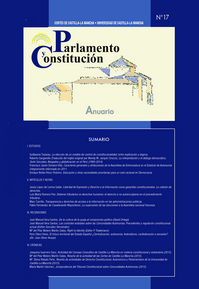Interpretation and democratic dialogue
DOI:
https://doi.org/10.71206/rapc.109Abstract
SUMMARY:
I. Introducción.
II. La dimensión del problema.
III. El originalismo.
IV. El nuevo originalismo.
V. El constitucionalismo vivo/ La interpretación dinámica.
VI. El originalismo vivo (living originalism).
VII. Dworkin, la lectura moral y la "novela en cadena".
VIII. El diálogo democrático y la interpretación en una comunidad de iguales.
IX. Bibliografía.
Downloads
Global Statistics ℹ️
|
91
Views
|
36
Downloads
|
|
127
Total
|
|
References
Ackerman, B. (1993), We the People, Cambridge: Belknap Press.
Allen Murphy, B. (2014), Scalia: A Court of One, New York: Simon & Schuster.
Bennett, R. & Solum, L. (2011), Constitutional Originalism: A Debate, New York: Cornell University Press. DOI: https://doi.org/10.7591/cornell/9780801447938.001.0001
Berger, R. (1977), Government by Judiciary, Cambridge: Harvard University Press.
Bork, R. (1990), The Tempting of America, New York: Simon & Schuster.
Dworkin, R. (1986), Law’s Empire, Cambridge: Harvard University Press.
Dworkin, R. (1997), "The Arduous Virtue of Fidelity: Originalism, Scalia,
Tribe, and Nerve," Fordham Law Review, vol. 65, (1997).
Ely, J. (1980), Democracy and Distrust, Cambridge: Harvard University Press. DOI: https://doi.org/10.2307/j.ctv102bj77
Fleming, J. (2015), Fidelity to Our Imperfect Constitution, Oxford: Oxford University Press. DOI: https://doi.org/10.1093/acprof:oso/9780199793372.001.0001
Hart, H. (1961), The Concept of Law, Oxford: Oxford University Press.
Jefferson Powell, H. (1985), "The Original Understanding of Original Intent,"Harvard Law Review 98: 897. DOI: https://doi.org/10.2307/1340880
Nino, C. (1991), The Ethics of Human Rights, Oxford: Oxford University Press.
Scalia, A. (2005), "Law and Language," First Things 11. DOI: https://doi.org/10.1080/02841860510029608
Strauss, D. (2010), The Living Constitution, Oxford: Oxford University Press.
Sunstein, C. (1993), The Partial Constitution, Cambridge: Harvard University Press. DOI: https://doi.org/10.2307/1341781
Sunstein, C. (2006), The Second Bill of Rights, New York: Basic Books.
Sunstein, C.; Schkade, D.; et al (2006), Are judges political? An empirical analysis of the Federal Judiciary, New York: Brookings Institution Press.
Tushnet, M. (1988), Red, White and Blue, Cambridge: Harvard University Press.
Tushnet, M. (1999), Taking the Constitution away from the Courts, Princeton: Princeton University Press. DOI: https://doi.org/10.1515/9781400822973
Waldron, J. (1999), Law and Disagreement, Oxford: Oxford University Press. DOI: https://doi.org/10.1093/acprof:oso/9780198262138.001.0001
Waldron, J. (2014), "Five to Four: Why do Bare Majorities Rule on Courts?"The Yale Law Journal, vol. 123, n. 6, 1626-2133. DOI: https://doi.org/10.2139/ssrn.2195768
Downloads
Published
How to Cite
Issue
Section
License
Copyright (c) 2016 Revista Anuario Parlamento y Constitución

This work is licensed under a Creative Commons Attribution-NonCommercial-NoDerivatives 4.0 International License.






